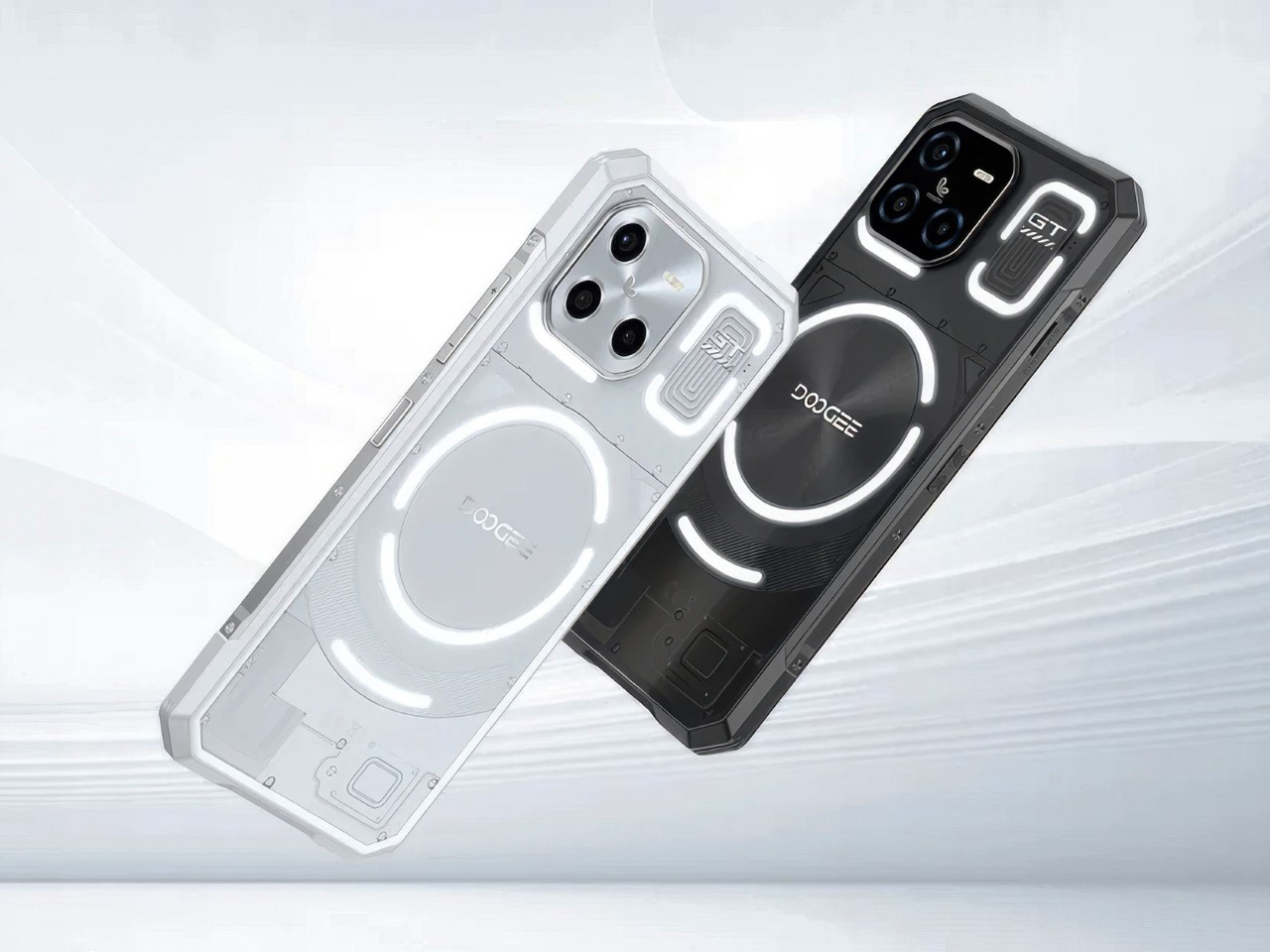
I guess the best metric of success is to measure how many brands are copying you. It seems like Nothing has been getting quite a few wins, with companies leaning into the transparent aesthetic – but the Glyph Interface has always been Nothing’s signature flex… Not anymore, though. A suspiciously-familiar design just emerged out of Doogee’s catalog, featuring a series of flashing LED strips on the back that Doogee calls their ‘Light Elf’. Say hello to the Blade GT, a smartphone that suggests the company is ready to trade in its rugged reputation for something flashier. With a back panel lit up by LEDs and a translucent design, the Blade GT feels like it’s auditioning for a role in the Nothing Phone lineup. Whether it earns the spotlight or ends up being a quirky sideshow remains to be seen, but one thing is clear: Nothing’s clearly doing something right with their Glyph Interface.
The LEDs on the back are impossible to miss. They flash and flicker, drawing immediate comparisons to the LED matrix that pretty much define Nothing’s phones. For a brand like Doogee, which usually emphasizes toughness over trendiness, this design choice feels like an unexpected pivot. Yes, the Glade GT is still an undeniably rugged device (Doogee doesn’t ditch that), but the Light Elf tries to give the device a bit of character beyond the ruggedness. If you look closely enough, you’ll see a winking elf on the phone’s back, with a smile, a round nose, and a personality that apparently comes to life when the phone’s in use.
Designer: Doogee
Turning to the front, the Blade GT offers a 6.72-inch IPS TFT display with a Full HD+ resolution, which may be a bit of a drag for people used to high-resolution displays. The 120Hz refresh rate ensures smooth performance for scrolling and gaming, which has become a standard expectation for phones in this price range. It’s not an OLED display, so you’re not getting the deepest blacks or the most vibrant colors, but for its category, it does the job. After all, if anyone splurges on a military-grade rugged phone, they’re really not going to nitpick when it comes to display contrast, are they now?
Internally, the Blade GT is powered by MediaTek’s Dimensity 7050 chipset, paired with 12GB of RAM and 256GB of internal storage. This configuration positions the phone firmly in the mid-range segment, capable of handling most daily tasks, streaming, and gaming without too much fuss. It also includes a microSD card slot, which is a nice practical touch even if it feels like a relic in the modern smartphone world. The chipset isn’t anything worth writing home about, given that the budget Nothing Phone (2a) has a better Dimensity 7200 chipset manufactured on the 4nm process.
The elephant in the room, however, is the Light Elf on the back, featuring 6 glyphs, ahem, light strips. The back panel features LED strips that light up for notifications, calls, music sync, and charging indicators, offering some customizable options for users who enjoy a bit of flair. The glyphs actually emote too, with their own happy, sad, and excited expressions, although why I’d want my phone to have emotions is sort of beyond me. While undeniably eye-catching, the Light Elf doesn’t introduce anything particularly innovative—it’s essentially a rehash of what Nothing popularized, minus the ecosystem integration or finesse. There are a few borrowed features, like battery charging being displayed on the glyph (or loop), or different apps triggering different light strips – but nothing as expansive or customizable as the kind seen on Nothing’s phones.
The camera setup is headlined by a 100MP main sensor, which is accompanied by an 8MP ultrawide lens and a 2MP macro shooter. While the high megapixel count sounds impressive on paper, the actual performance will likely hinge on the phone’s image processing software. In good lighting, you can expect decent shots, but don’t be surprised if low-light performance falters. Up front, the 32MP selfie camera handles casual snaps and video calls reasonably well. Riding the GenAI train, the phone comes with a few AI photo editing features too, including a Google-esque Magic Eraser, as well as background removal or changing tools. There’s even a speech-generation feature that can make your existing photos talk in more than 50 languages.
For all its flashy design choices, the Blade GT doesn’t entirely abandon Doogee’s rugged roots. It offers IP68 water and dust resistance, and is certified MIL-STD 810G (a military standard for durability) so it can handle all kinds of weather and impact without really showing signs of wear and tear. The 5000mAh battery functions in conditions as low as -40°C and as high as 70°C, delivering all-day endurance in the harshest weather.
The Blade GT is an odd device, caught between Doogee’s rugged past and its apparent desire to break into the design-conscious mainstream. The LED-lit back and translucent panel attempt to inject personality into a phone that’s main feature is still its rugged design and durability. At $359, it still does a fair bit to impress for a low-mid-range device, although this won’t be the phone that pushes Doogee to the mainstream. Or maybe it will, if Nothing decides to lawyer up…